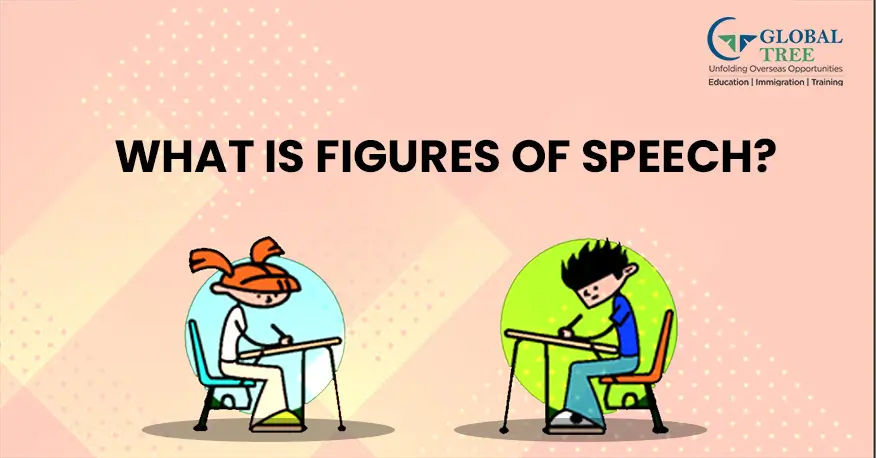27+ Figures of Speech Explained with Examples - The Ultimate Guide 2025

What is a Figure of Speech?
A phrase that has an implicit meaning and shouldn't be taken literally is known as a figure of speech. This indicates that a phrase's precise meaning is not its true meaning. Since the majority of figures of speech are frequently used in everyday speech, native English speakers are quite acquainted with them. However, if you don't speak English as your first language, or if you do and want to learn more about it, you've come to the right spot!
Speaking English frequently
Speaking English frequently can be difficult for those who are not native speakers of the language. The inability to find the appropriate words or phrases to express yourself may cause you to stumble or talk incoherently frequently. And occasionally, this might place you in an awkward circumstance. In this blog, we'll look at 18 various figures of speech to help you keep that from happening. Let's get going!
Uses of Figures of Speech
Although there are many definitions and instances of figures of speech online, it is crucial that you first comprehend when to use each one.
- Metaphors, idioms, similes, ironies, antitheses, alliterations, personifications, and contradictions are all common components of figures of speech. As a result, as you learn about these figures of speech, you also begin to comprehend other linguistic concepts in English.
- Using figures of speech can significantly improve the general quality of your English because they are used in both written and spoken English. Besides, you can also learn to use synonyms to improve vocabulary for both writing and speaking.
- Most of the time, you can use these expressions as a clever comeback or just to show off your command of the language.
Types of Figures of Speech with examples
You might be eager to start utilizing figures of speech in your everyday discussion after looking at these phrases. But to do that, you must also be aware of which figure of speech to use and when. To help you understand when to use each of the 18 kinds of figures of speech, let's go over their specifics with examples.
-
Personification
This style of the figure of speech is created by imputing human traits to things that are otherwise inanimate. For instance, you may have heard people state "the wind is howling" frequently. To better understand, take a look at these two well-known examples:
- "The wind whispered through the trees." In this example, the wind is given the human quality of whispering, which is a characteristic of human speech.
- "The stars danced in the sky." In this example, the stars are given the human quality of dancing, which is a characteristic of human movement and expression.
-
Metaphor
This form of a figure of speech is typically used when referring to two very dissimilar topics that share a connection. As a result, a new meaning can be implied by applying the action, feature, or effect of the unrelated object to that of the related thing. For instance,
- “He was a lion on the football field”. In this metaphor, the person's qualities or behavior on the football field are being compared to those of a lion.
- “Her words were music to my ears". In this metaphor, the positive impact of the person's words is compared to the pleasure one might feel from listening to music.
-
Simile
These expressions resemble metaphors in some ways, but their meaning is more explicit than implicit. In similes, the words "as" or "like" are used in lieu of the meaning that is inferred indirectly. In order to connect the two distinct words being used, these words are used. The best examples of similes are listed below:
- "Her eyes were as bright as the stars in the night sky". In this simile, the brightness of the person's eyes is being compared to that of stars using the word "as."
- "He fought like a lion defending his territory". In this simile, the person's fighting style or behavior is being compared to that of a lion using the word "like."
-
Alliteration
These phrases are figures of speech with non-vowel letters at the opening of each word that have a similar-sounding consonant. By looking for these parallels in two or three sentences straight, you can spot them. Examples of alliterative figures of speech include:
- "Peter Piper picked a peck of pickled peppers". In this tongue-twister example, the "p" sound is repeated at the beginning of multiple words in the same sentence.
- "She sells seashells by the seashore". In this example, the "s" sound is repeated at the beginning of multiple words in the same sentence.
-
Onomatopoeia
These distinctive figures of speech are relatively straightforward. Words or phrases that mimic the noises they make are known as onomatopoeia. These figures of speech, though they may be an informal and childish method of speaking, are frequently useful when one is attempting to be illustrious. There are two common examples:
- "The bees buzzed around the flowers". In this example, the word "buzzed" imitates the sound of the bees flying around.
- "The clock tick-tocked all night long". In this example, the words "tick-tocked" imitate the sound of the clock ticking and tocking.
(Read More: How to prepare IELTS Speaking topics: Parts 1,2 and 3)
-
Hyperbole
Even if you are not a natural English speaker, you have probably used these at least once because they are among the most widely used figures of speech in the language. These words use excessive language to highlight how important a particular concept is. Here are two instances of exaggerated figures of speech:
- "I've told you a million times to clean your room". In this hyperbole, the speaker is exaggerating the number of times they have asked the listener to clean their room for emphasis.
- "The suitcase weighed a ton". In this hyperbole, the speaker is exaggerating the weight of the suitcase for emphasis.
-
Euphemism
Euphemisms are figures of speech that are employed in lieu of more forceful and abrasive language. To sound more polite and occasionally politically correct in your interactions, you can use these usually milder or more acceptable terms. For instance,
- "He passed away peacefully in his sleep". In this euphemism, the phrase "passed away" is used instead of "died" to make it sound less harsh and more polite.
- "We have to let you go due to a reduction in workforce". In this euphemism, the phrase "let you go" is used instead of "fire" or "layoff" to make it sound less harsh and more professional.
-
Irony
Sarcasm is sometimes also conveyed through figures of speech. These expressions can be used to communicate a particular meaning by saying the exact opposite of it. Such ironic statements or expressions are readily understood in everyday English. However, to clarify, consider these two instances:
- "A fire station burns down". In this example, it is ironic that a place meant to fight fires actually catches on fire and burns down.
- "A traffic jam on the way to a protest against traffic congestion". In this example, it is ironic that the people protesting against traffic congestion end up being stuck in traffic jam themselves.
(Read More: 13 tips to Score high on PTE listening)
-
Anaphora
These sentences contain repeated words, phrases, or clauses, which define this form of figure of speech. Typically, they are used in opposition in either forceful and dramatic speeches or children's rhymes. For instance,
- "We shall fight on the beaches, we shall fight on the landing grounds, we shall fight in the fields and in the streets, we shall fight in the hills; we shall never surrender." - Winston Churchill In this example, the phrase "we shall fight" is repeated at the beginning of multiple clauses for emphasis.
- "Every day, every night, in every way, I am getting better and better." - Émile Coué In this example, the phrase "every" is repeated at the beginning of multiple clauses for emphasis.
-
Pun
Puns are among the most frequently used figures of speech in daily conversation. They can be great discussion starters because they make you sound clever and occasionally even comical. Here are a few instances of puns in speech:
- "I'm reading a book on anti-gravity. It's impossible to put down." In this pun, the phrase "put down" has a double meaning, as it can refer to both putting a book down and putting something down, such as a pet.
- "The bicycle can't stand alone because it's two-tired." In this pun, the word "tired" has a double meaning, as it can refer to both the tires of the bicycle and being exhausted.
-
Apostrophe
Apostrophe figures of speech are scenarios where a character, author, or speaker greets an inanimate object or even a person who does not actually exist in the given scenario (typically in literary worlds). Although it may not be frequently used, it is undoubtedly an intriguing figure of speech to learn about. Here are two illustrations:
- "O, Romeo, Romeo, wherefore art thou Romeo?" - William Shakespeare, Romeo and Juliet In this apostrophe, Juliet is addressing Romeo, who is not physically present as if he could hear her.
- "Oh, my dear coffee, how I adore thee! Thou art my morning savior." In this apostrophe, the speaker is addressing coffee as if it were a person, expressing their love and appreciation for it.
(Read More: List of courses to pursue after 10th to study abroad)
-
Paradox
These figures of speech, like ironies, emphasize something by discussing the exact antithesis of it. A paradox, on the other hand, differs from irony in that it does not make the contrast as apparent. Let's examine two instances of paradoxical figures of speech:
- "Less is more." This paradoxical statement suggests that sometimes having less can actually result in having more of what really matters.
- "I am nobody." This paradoxical statement suggests that the speaker is simultaneously referring to themselves as a person and as no one in particular, creating a contradictory and somewhat perplexing statement.
-
Understatement
A figure of speech can also be an oversimplification. It aims to provoke a less reactive reaction to a specific remark. These can be very helpful in your everyday English interactions. For instance,
- "It's just a flesh wound." - Monty Python and the Holy Grail In this understatement, the character is downplaying the severity of their injury to humorous effect.
- "I have to have this operation. It isn't very serious. I have this tiny little tumor on the brain." - Catcher in the Rye by J.D. Salinger In this understatement, the character is downplaying the seriousness of having a tumor on the brain, which is actually a life-threatening condition.
-
Metonymy
These figures of speech, like synonyms, allude to words that are substituted for other words (nouns, to be specific). Although these words serve as replacements, they vary from the word they are meant to replace. Here are two instances of metonymic figures of speech:
- "The pen is mightier than the sword." In this metonymy, the pen represents writing or communication, while the sword represents military force or violence.
- "The White House announced a new policy today." In this metonymy, the White House represents the U.S. government or the executive branch of government, as it is the official residence of the President of the United States.
(Read More: How to shine in an interview while self-introduction)
-
Oxymoron
This figure of speech, which should not be confused with ironies and paradoxes, links two opposing concepts at once. This implies that two opposing ideas are used within a single sentence to create levity in an oxymoron figure of speech. For instance,
- "Jumbo shrimp" In this oxymoron, the words "jumbo" and "shrimp" are combined to create a paradoxical effect, as shrimp are typically small in size.
- "Silent scream" In this oxymoron, the words "silent" and "scream" are combined to create a paradoxical effect, as screams are typically associated with loud and vocal expressions of emotion.
-
Antithesis
An example of an antithesis is when two concepts or words are juxtaposed. It shouldn't be confused with an oxymoron because the latter is a technique used to communicate two opposing ideas or concepts in a sentence as opposed to the former, which is a statement that conveys two conflicting ideas. Typical instances of contradiction include:
- "It was the best of times, it was the worst of times, it was the age of wisdom, it was the age of foolishness..." - Charles Dickens, A Tale of Two Cities In this antithesis, Dickens contrasts two opposing ideas, the best of times and the worst of times, to show the stark contrast between them.
- "To be or not to be, that is the question." - William Shakespeare, Hamlet In this antithesis, Shakespeare contrasts the two opposing choices of "to be" and "not to be" to create a sense of tension and uncertainty.
-
Climax
A figure of speech where the importance of concepts, words, phrases, clauses, or sentences is ranked in ascending order.
- "It is not in the stars to hold our destiny, but in ourselves." In this example from William Shakespeare's play Julius Caesar, the climax is reached in the final phrase, "but in ourselves," which emphasizes the idea that we have control over our own destinies. Mastering these areas will help to ace the exams like TOEFL. Seeking help from TOEFL coaching would help you do great.
- "He is no fool who gives what he cannot keep to gain that which he cannot lose." In this example from the missionary Jim Elliot, the climax is reached in the final phrase, "that which he cannot lose," which emphasizes the importance of eternal values over material possessions.
-
Anti-climax
An anticlimactic figure of speech is one in which ideas and events progressively lose significance as they proceed. It is a rhetorical technique that involves abrupt tonal shifts when switching from essential to unimportant ideas.
- "After climbing Mount Everest, he returned home and found that nobody cared." In this example, the anticlimax occurs when the climber, having achieved a monumental accomplishment, finds that the world has moved on and his achievement is met with indifference.
- "He had trained for months, changed his diet, and visualized victory every day. Then, he tripped and fell at the start of the race." In this example, the anticlimax occurs when the runner, who has done everything he can to prepare for the race, fails at the starting line due to a trivial mistake.
What’s next?
There are numerous other figures of speech that you might find interesting in addition to these 18 with instances. Like-
- Synecdoche
- Epigram
- Litotes
- Circumlocution, and
- Pleonasm
-All distinct figures of speech, though they are used sparingly.
The best part about being aware of all of these is that you can greatly improve your writing's eloquence, which is something that is highly desired in applicants who take tests like the IELTS and the TOEFL.
FAQ’s:
1. What is the difference between a simile and a metaphor?
-
Answer:
A simile directly compares two things using "like" or "as" (e.g., "Brave as a lion"). A metaphor implies a comparison without these words (e.g., "Time is a thief"). Both enhance imagery, but metaphors are more implicit.
2. Why are figures of speech important in everyday communication?
-
Answer:
They make language vivid, expressive, and engaging. For example, saying "It’s raining cats and dogs" is more impactful than "It’s raining heavily." They also aid in persuasion (e.g., advertising slogans).
3. Can figures of speech be overused?
-
Answer:
Yes, excessive use (e.g., too many metaphors in an essay) can confuse readers or sound unnatural. Balance is key—use them to emphasize points, not overshadow clarity.
4. How do figures of speech differ in poetry vs. prose?
-
Answer:
Poetry relies heavily on figures of speech for rhythm and imagery (e.g., alliteration in "Peter Piper picked"). Prose uses them more sparingly to clarify or emphasize ideas (e.g., irony in novels).
5. What’s the most misunderstood figure of speech?
-
Answer:
Oxymorons (e.g., "deafening silence") are often confused with paradoxes. An oxymoron combines contradictory terms for effect, while a paradox is a seemingly illogical statement that reveals truth (e.g., "Less is more").
6. Are figures of speech culture-specific?
-
Answer:
Some are! Idioms like "kick the bucket" (to die) may not translate well. However, universal devices like similes or personification (e.g., "The sun smiled") are widely understood.
7. How can I identify figures of speech in a text?
-
Answer:
Look for:-
Unusual comparisons (metaphors/similes).
-
Human traits in objects (personification).
-
Exaggeration (hyperbole).
-
Contradictions (oxymorons).
Reading aloud helps spot sound devices (alliteration, assonance).
-









